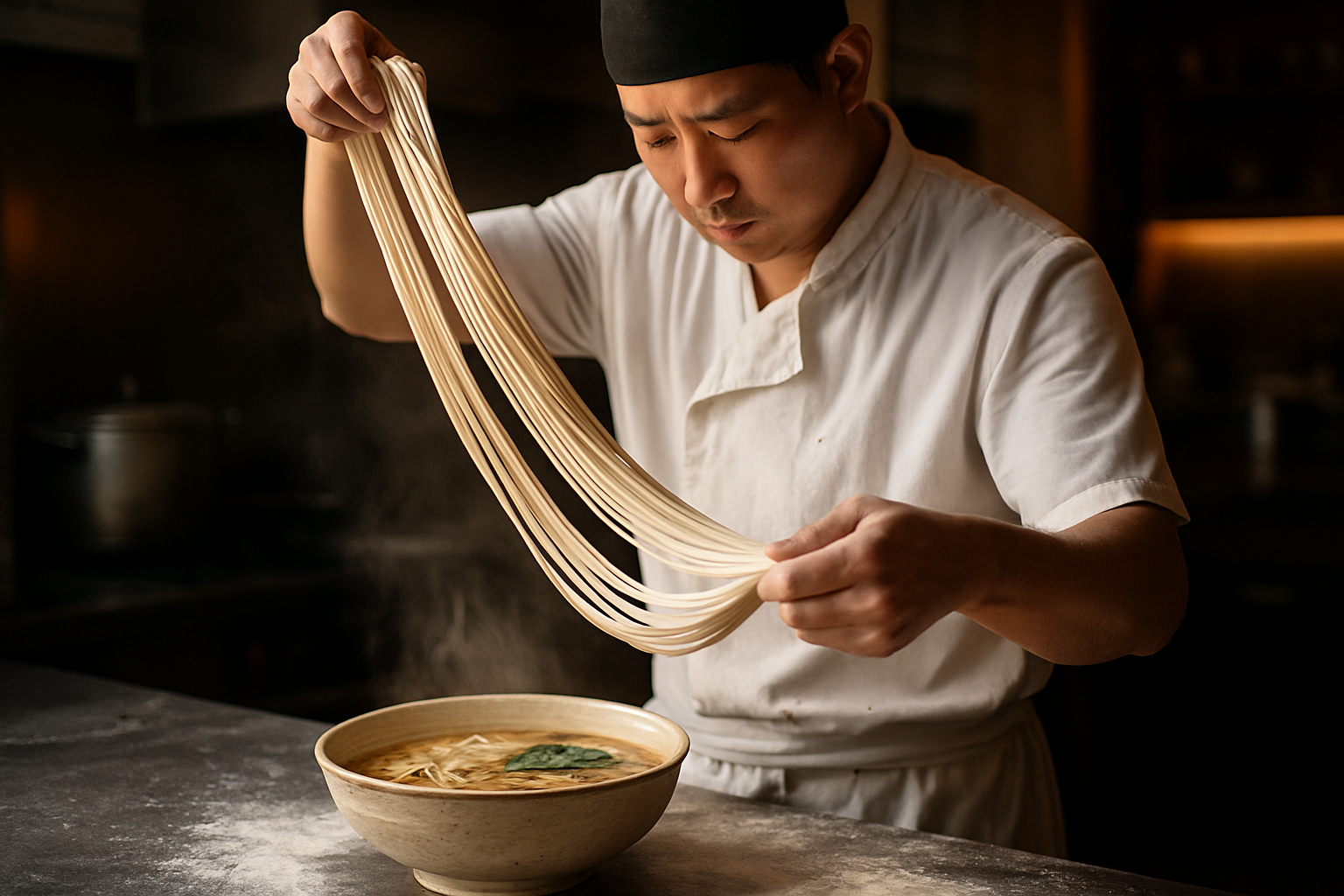Noodle Pulling: The Art of Hand-Crafted Chinese Lamian
Slurp, stretch, and savor the mesmerizing world of hand-pulled noodles. Lamian, a culinary marvel from China, transforms simple dough into silky strands through rhythmic pulling and twisting. This ancient technique, now gaining global recognition, offers a sensory feast that goes beyond mere sustenance. Join us as we dive into the captivating realm of noodle pulling, where tradition meets innovation on your plate.

From Street Food to Gourmet Kitchens
Once primarily found in humble street stalls across China, lamian has now made its way into high-end restaurants worldwide. This elevation has sparked a renaissance in noodle culture, with chefs experimenting with new flavors and presentations. Modern lamian dishes often feature innovative broths, from rich, spicy Sichuan-inspired concoctions to delicate, aromatic herbal infusions. Toppings have evolved too, with traditional beef and lamb sharing the spotlight with truffle shavings, sous-vide eggs, and even molecular gastronomy elements. This fusion of old-world technique and contemporary cuisine has created a new niche in the culinary world, attracting food enthusiasts and chefs alike who are eager to explore the possibilities of hand-pulled noodles.
The Science Behind the Stretch
The seemingly magical transformation of dough into noodles is rooted in food science. The key lies in the gluten network formed within the dough. As the noodle puller works the dough, the gluten proteins align and strengthen, creating long, elastic strands. This process is enhanced by the addition of alkaline salts, traditionally in the form of lye water or kansui, which increase the pH level of the dough. The alkalinity not only contributes to the characteristic chewy texture but also imparts a subtle yellow hue to the noodles. Understanding these scientific principles has allowed modern chefs to experiment with different flour blends and additives, pushing the boundaries of what’s possible with hand-pulled noodles.
The Global Noodle Revolution
As the popularity of lamian spreads, it’s inspiring a new generation of noodle enthusiasts around the world. Cooking schools in major cities now offer classes in the art of noodle pulling, attracting both professional chefs and home cooks. Social media has played a significant role in this trend, with viral videos of master noodle pullers captivating millions of viewers. This global interest has led to cross-cultural noodle innovations, such as Italian-Chinese fusion dishes featuring hand-pulled noodles in carbonara sauce or paired with Neapolitan-style toppings. The adaptability of lamian to various culinary traditions demonstrates its potential as a versatile base for creative gastronomy.
Sustainability and Artisanal Revival
The resurgence of hand-pulled noodles aligns with the growing demand for artisanal, small-batch foods. Unlike mass-produced noodles, lamian offers a sustainable alternative with minimal packaging and preservatives. The process is labor-intensive but energy-efficient, requiring no machinery beyond the skilled hands of the noodle puller. This return to traditional methods is part of a broader movement in the food industry, emphasizing craftsmanship and connection to culinary heritage. As consumers become more conscious of their food choices, the transparency and authenticity of hand-pulled noodles provide a compelling narrative that resonates with those seeking more than just a meal, but an experience with a story.
Noodle Pulling Insights
-
The dough for hand-pulled noodles typically rests for several hours or overnight to develop optimal elasticity.
-
A single portion of lamian can be stretched to over 100 feet in length.
-
The technique of noodle pulling is believed to have originated in the Lanzhou region of China over 4,000 years ago.
-
Professional noodle pullers can create up to 16,384 strands from a single piece of dough in just a few minutes.
-
The alkaline component in the dough not only affects texture and color but also helps to preserve the noodles.
-
Hand-pulled noodles cook much faster than their machine-made counterparts, often requiring only 30 seconds to 1 minute in boiling water.
In a world where convenience often trumps craft, the art of noodle pulling stands as a testament to the enduring power of culinary tradition. As this ancient technique continues to evolve and inspire, it offers more than just a delicious meal—it provides a connection to history, a celebration of skill, and a canvas for culinary creativity. Whether you’re slurping a bowl of authentic lamian in a bustling Chinese market or savoring an innovative fusion dish in a trendy urban eatery, hand-pulled noodles invite you to experience food as both sustenance and spectacle. So the next time you encounter these extraordinary strands, take a moment to appreciate the artistry in your bowl and the centuries of tradition that have led to this perfect, chewy bite.





